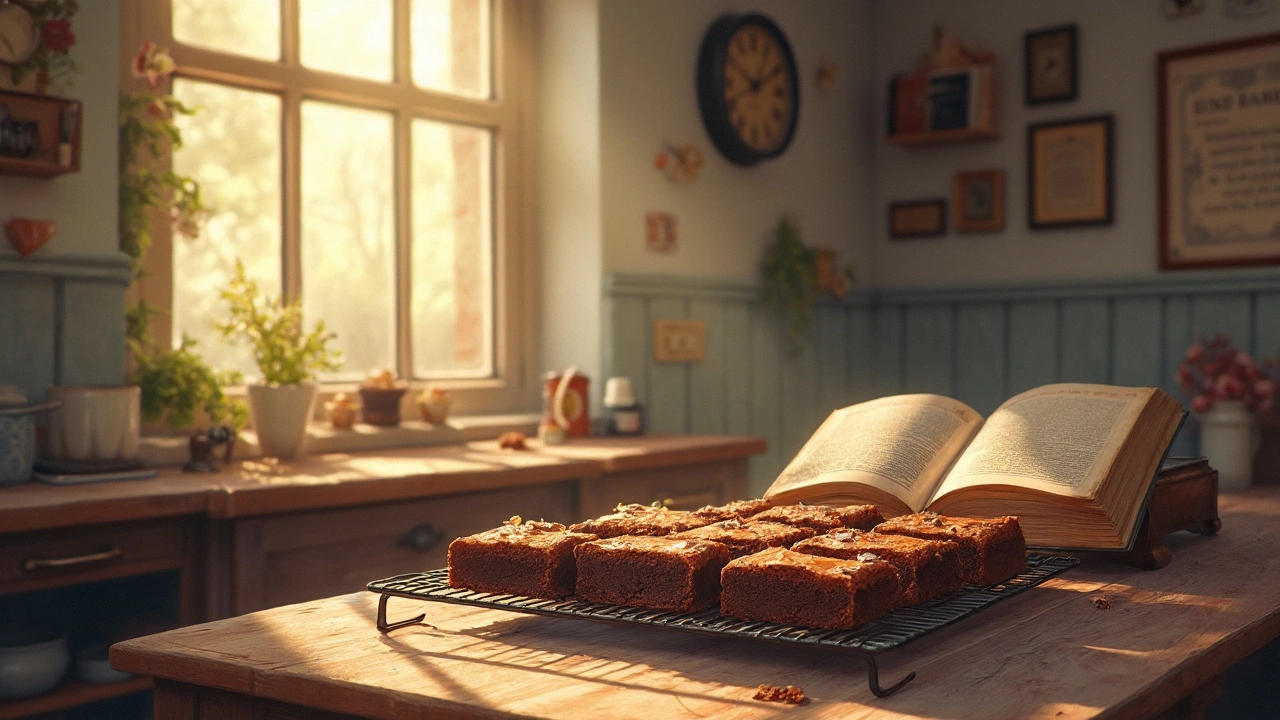
There's nothing worse than taking a bite of a brownie and finding it dry as a desert. If you've been there, you're not alone. But hey, the good news? Tweaking how you bake can totally save you from this sad fate. So, how do you nail that perfect fudgy texture every single time?
First thing's first: understanding how brownies bake can save you a lot of heartache. You see, they keep cooking even after you pull them out of the oven. Yep, that residual heat is a silent brownie assassin! So, about those extra baking minutes you thought would make them more set? Nah, they might just make them overcooked.
Timing and temperature are your best friends in the brownie world. Keeping your oven at around 325°F to 350°F is like a sweet spot—not so hot that the edges scorch before the center firms up. Also, setting a timer is key. Start checking those beauties a few minutes before the recipe suggests. Remember, slightly underdone is better than overdone!
- Understanding the Baking Process
- Mastering Time and Temperature
- The Role of Ingredients
- Testing for Doneness
Understanding the Baking Process
Baking brownies is more science than magic, although sometimes it might feel like you need a wand for those perfect results. Understanding how batter morphs into that delightful treat is key. Let’s break down the magic.
Firstly, brownies fall somewhere between a cake and cookie in terms of consistency, and that's thanks to the ratio of fat, sugar, and flour. This unique blend is why brownies get that soft yet dense nature. When you mix these ingredients, you're not just combining stuff—you're starting a series of chemical reactions.
Brownies rely heavily on the Maillard reaction, which is science speak for how sugars and amino acids in your brownies react under heat to form a glorious brown crust, lending to that incredible rich flavor we love. But overdo it, and that crust becomes too crispy, edging into overcooked territory.
Another crucial point is how your oven temperature really matters. The heat transfers from the outside in, meaning the edges will cook faster than the center. This is why those precious minutes at the end of baking are like the final boss battle in a video game. Pull them out just a tad too late, and you'll lose that fudgy center.
Finally, knowing when to take your brownies out of the oven is a practiced art. Oven variations mean 350°F isn't always 350°F everywhere. An oven thermometer is your best friend here. And remember, those edges may lie and appear done before the center is set.
Give this whole process your attention, and you'll notice a more consistent result. We all know patience is a virtue, but in the brownie world, it’s a game-changer!
Mastering Time and Temperature
Alright, let’s dive into how crucial time and temperature are when you’re trying to get those perfect, gooey brownies. These are the main players that determine whether your brownies turn out divine or end up as overcooked bricks.
The sweet spot for your oven when baking brownies is generally between 325°F and 350°F. Why? Because baking them too hot can cause edges to harden way before the center firms up, leading to uneven baking. Keeping the temperature in check ensures they develop that nice crust while staying soft inside.
Baking tips to remember:
- Preheat your oven to the right temperature. It’s tempting to skip this step—but don’t! A preheated oven ensures your brownies start baking at the right heat from the get-go.
- Use an oven thermometer if you can. Many home ovens are not as accurate as they claim to be. This little tool can save your hard work from going up in smoke—or down in dryness.
- Place the pan on the middle rack. This position gets you the most even heat distribution and avoids overly crisp bottoms or tops.
Here’s a pro tip: Set your timer five minutes earlier than what the recipe says. Brownies are one of those magical treats that continue to cook from residual heat once out of the oven.
How do you know when to pull them out? Give the brownies a gentle nudge. They should be slightly springy to the touch but with that classic gooey resistance just right beneath the surface. Or poke a toothpick around an inch from the edge. If it comes out with a few moist crumbs, you're golden!
Getting this balance right can mean the difference between brownies that disappear fast at a party, and those that stay sadly untouched. Once you master this, you’re on your way to brownie greatness!

The Role of Ingredients
Alright, let’s talk about the magic mojo in your brownies: ingredients. They define how your brownies taste and feel in your mouth. Ever wonder why some brownies are chewy while others are cakey? It's all in the mix, buddy.
So, first things first. The type of chocolate you use can make or break your brownie game. Dark chocolate gives that intense, rich flavor. If you use milk chocolate, expect a sweeter brownie. And don’t skimp on quality! As Julia Child famously said,
“With baking, as with any food, quality is king.”
Let’s not forget about fats. Butter offers a fuller flavor and little spread while baking, whereas oil can make them more moist. Both have their moments, but mixing with butter usually wins in flavor wars.
Now, on to the flour. Using too much can make your brownies cake-like. For that gooey texture, stick with less. A helpful rule of thumb? One cup per batch works well. It’s easier to add more if your mix feels too runny than to salvage dry batter.
Then there’s sugar. It’s not just about sweetening. The right amount helps make that lovely crust on top that many adore. Perfect brownies strike a balance—sweet, but not toothache-inducing.
Here's a simple ingredient balance that often hits the spot:
- 1 cup sugar
- 1/2 cup butter
- 1/2 cup cocoa powder
- 2 large eggs
- 1 cup flour
Remember, each ingredient matters, and tweaking them can make your brownies legendary. Whether you’re into fudgy wonders or cakey squares, understanding ingredients is your secret weapon.
Testing for Doneness
Alright, so you're watching your oven like a hawk and the timer is about to ding. How do you know if your brownies are fully baked but not overdone? Simple tricks can help ensure you're pulling them out right on time for that perfect bite.
The classic toothpick test is trusted by many. Stick a toothpick in the center of your brownies. If it comes out with a few moist crumbs clinging to it, you're golden. An entirely clean toothpick might mean you've gone a bit too far, resulting in drier brownies.
Another trick is the 'shuffle test.' Gently shake your pan. If the center jiggles slightly, they need a bit longer. No wobble at all typically means it's ready. Your brownies will continue to set as they cool, so don’t worry if they seem a bit under.
If you're aiming for gooey rather than cakey, check the edges as well. They should be pulling away slightly from the pan, but not too much. The edges will often cook faster, giving you a hint without cutting into the pan.
Timing can vary depending on your oven and the recipe. Some ovens run hotter; it's a fact of life. Grab an oven thermometer if you're unsure about your oven's real temp. It can be a game changer for all baking adventures, ensuring your oven's at the right heat for that perfect batch.
Remember, bending these rules to your liking is part of the fun. If you're always aiming for those perfect brownies, a little testing and practice will get you there in no time.